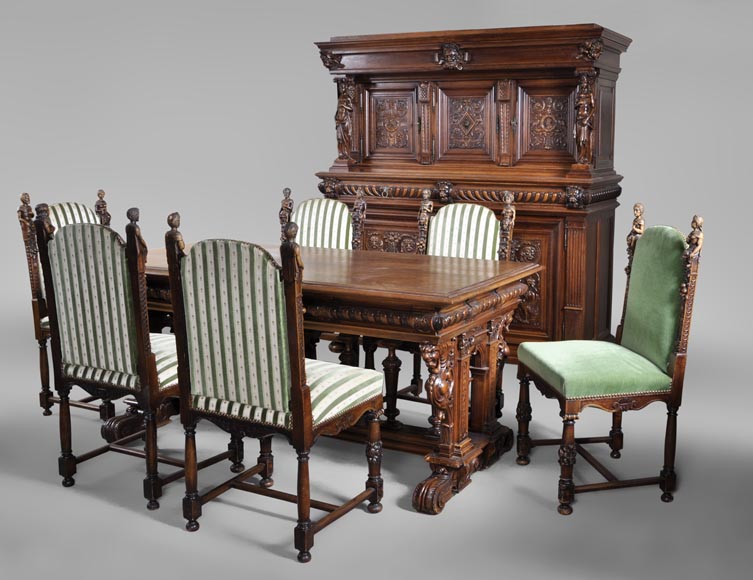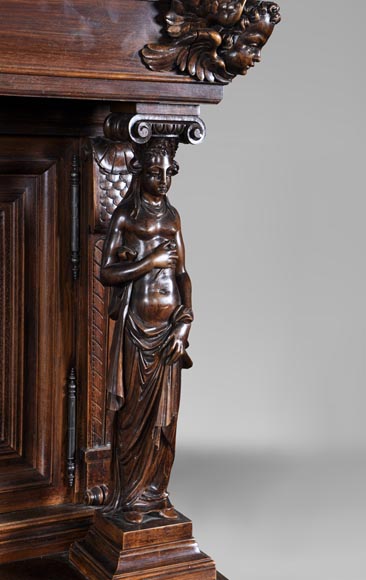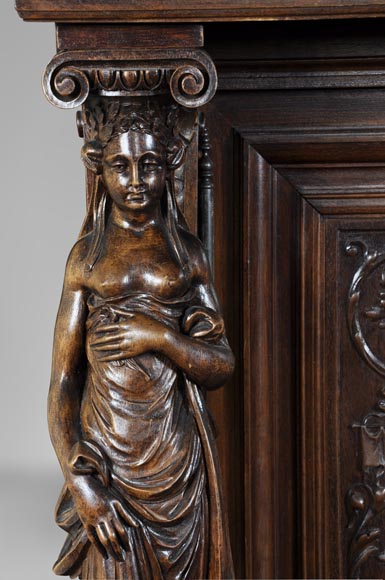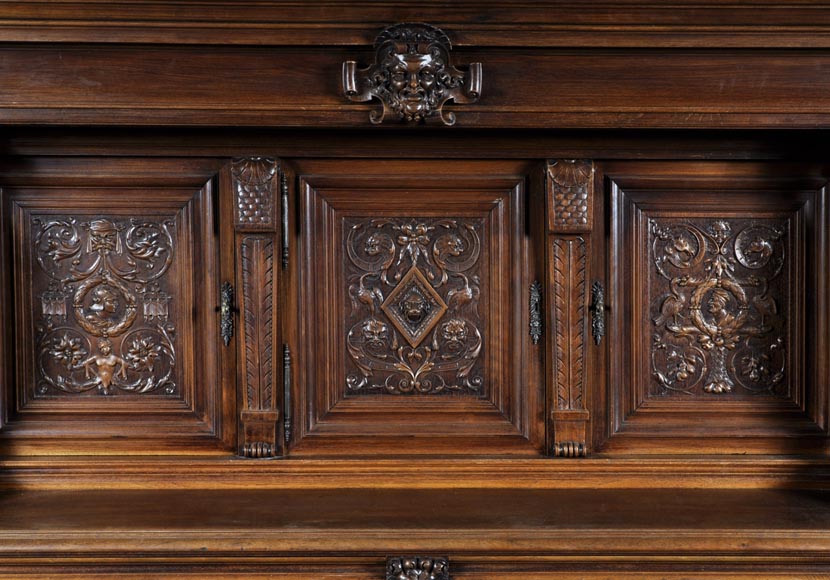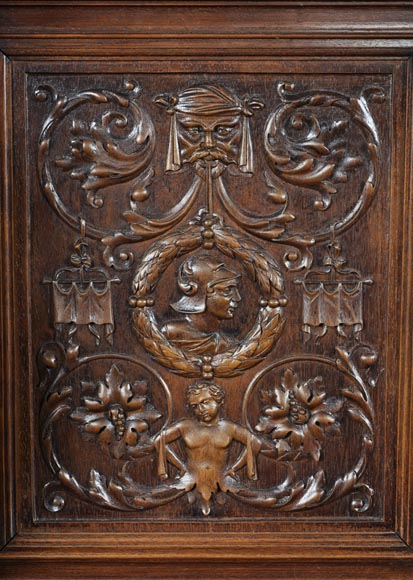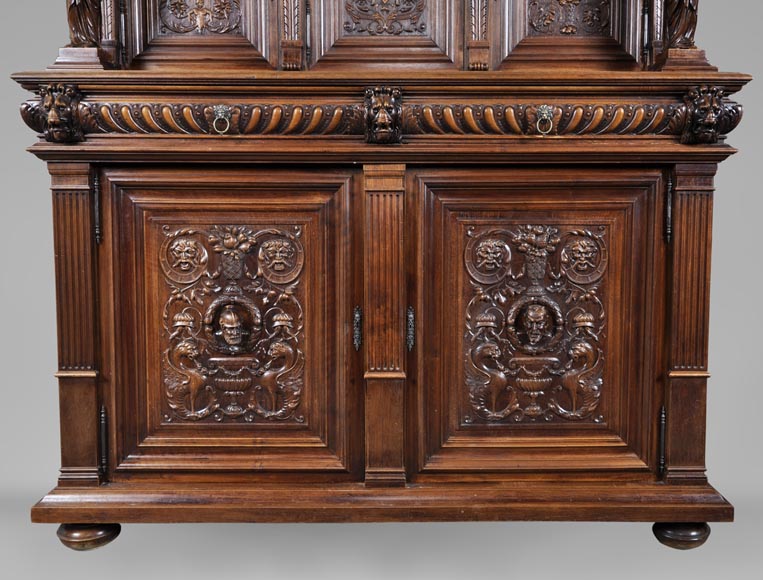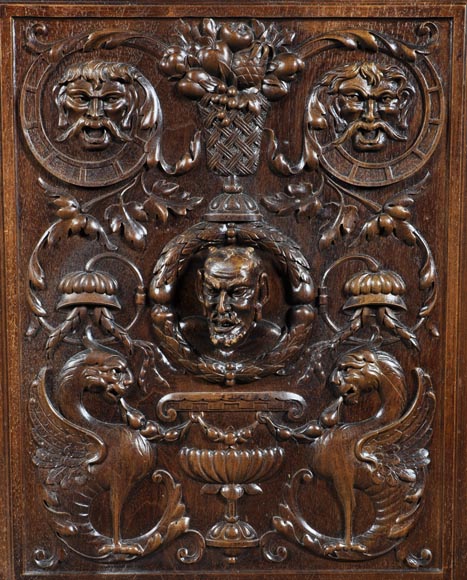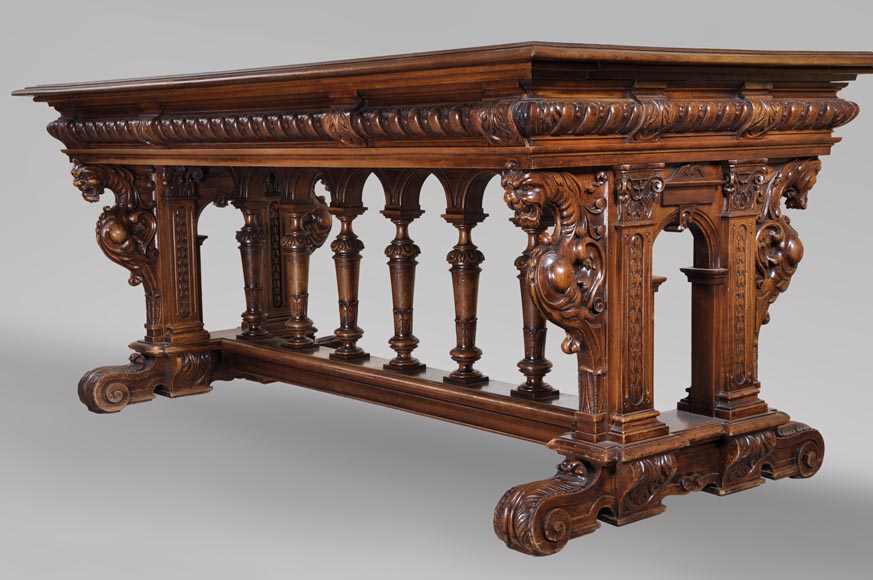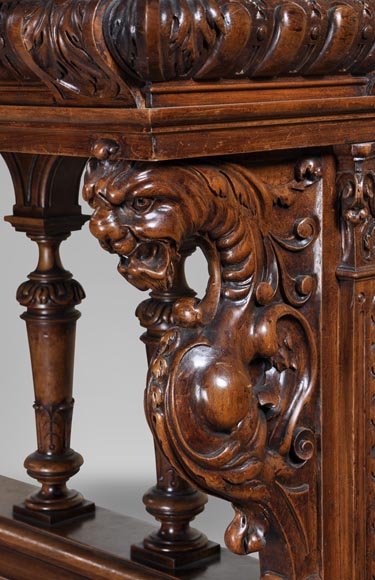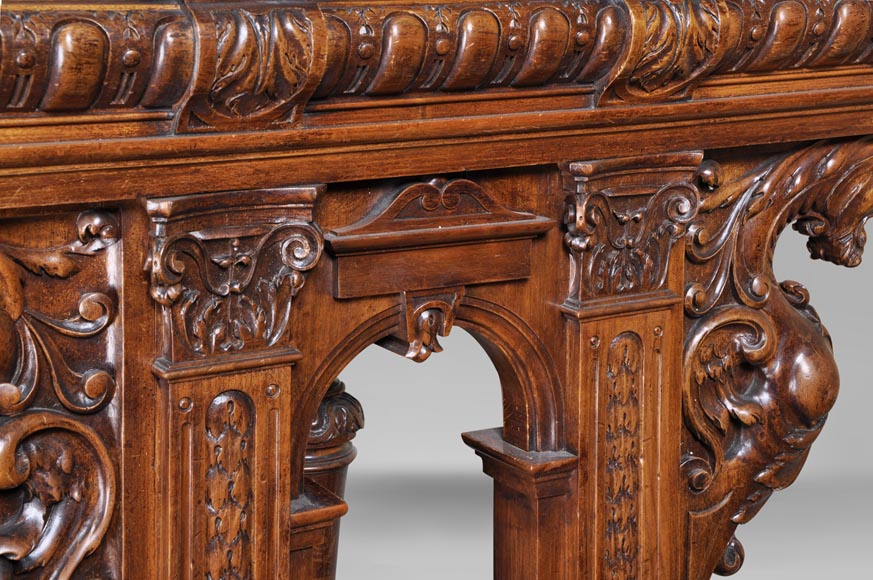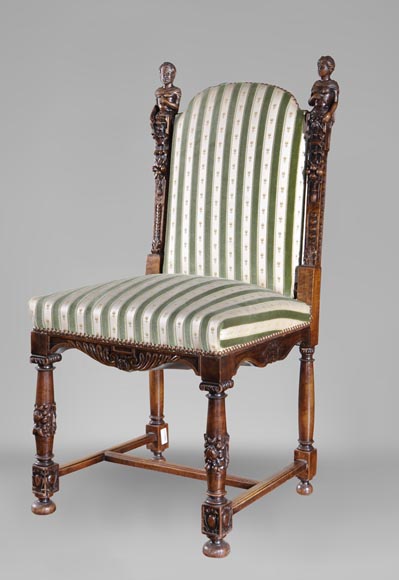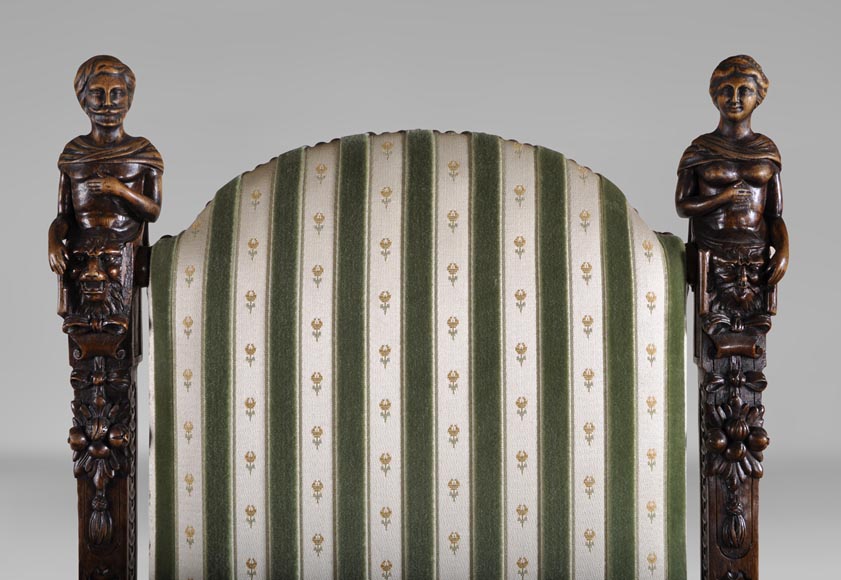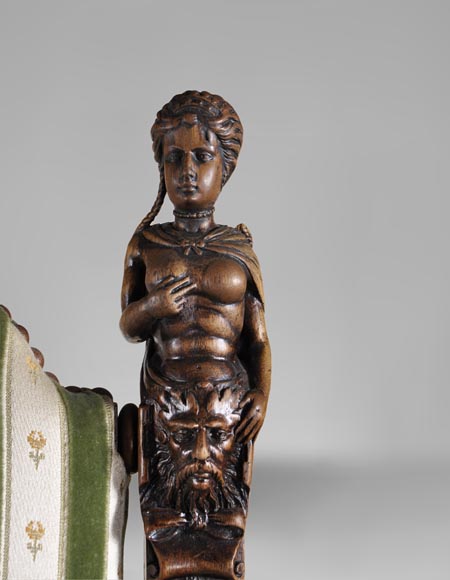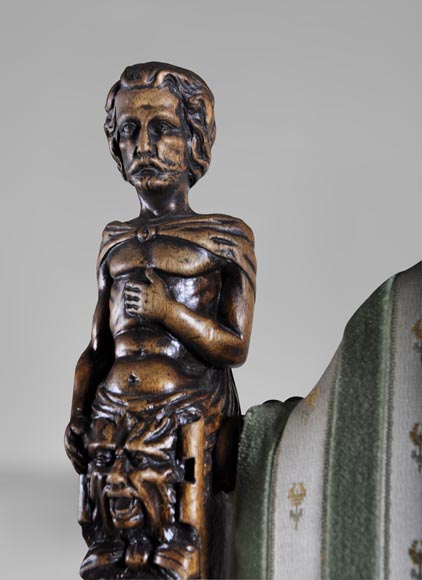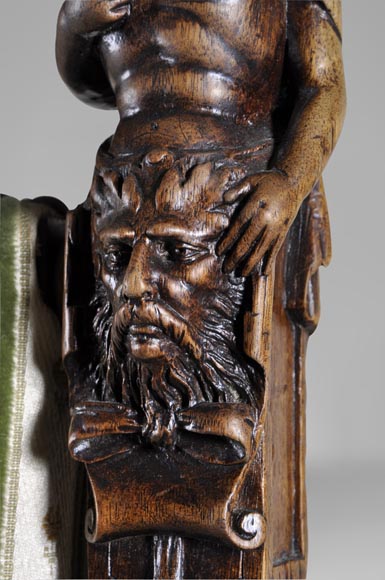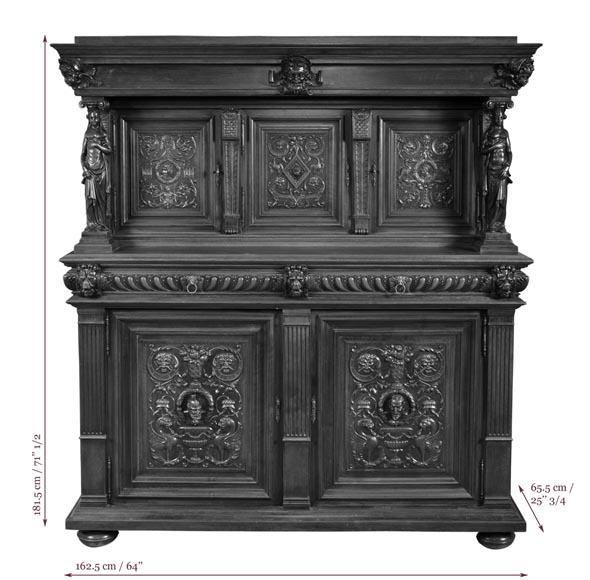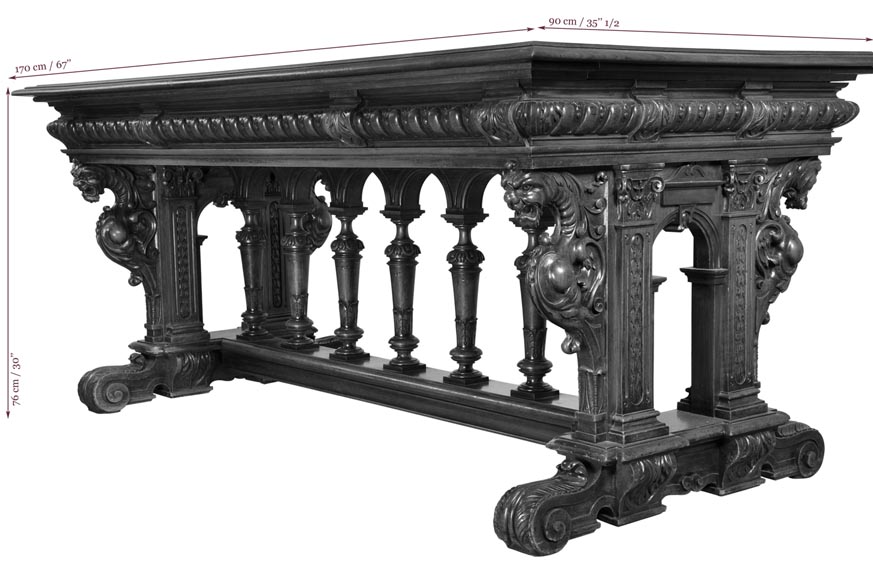Style Neo-Renaissance / Ref.16929
Antique Neo-Renaissance style dining room made out of carved walnut with grotesques and fantastics animals decor
Dimensions
Width 64'' ⅛ 163cm
Height 71'' ⅝ 182cm
Depth: 26'' 66cm
Origin:
19th century
Status:
In very good condition.
This neo-Renaissance dining room includes:
- A carved walnut dresser with grotesques. H: 181.5 cm; W: 162.5 cm; D: 65.5 cm (71.5 x 64 x 25.9 in)
- A carved walnut table with grotesques and leafy designs. H: 76 cm; W: 170 cm; D: 90 cm (30 x 67 x 35.4 in)
- 6 carved walnut chairs with padding, 5 with white and green stripes and 1 mint green, with two different figures topping each chair. H: 101.5 cm; W: 51.5 cm; D: 44.5 cm (40 x 20.3 x 17.5 in).
This dining room corresponds to the Neo-Renaissance style . The 19th century is known as the century of “eclecticism” in decorative arts, during which artistic styles from past centuries were rediscovered and mixed together to create original objects, furnishings, and monuments. Certain styles are particularly historicist, like the “neo-Gothic” style, the “neoclassical” style, and the “neo-Renaissance” style. The Paris Hôtel de Ville (town hall) is a prime example of French neo-Renaissance architecture.
Grotesques and mythical creatures are typical Renaissance motifs. The table and chairs have nicely carved, straight legs and an H-shaped leg structure, which was invented during the Renaissance. The many straight lines and angles are typical of the “classicist” Renaissance. The caryatids on the dresser topped with ionic capitals and the arcades underneath the table also refer to the Ancient elements reused during the Renaissance. The two bodies dresser almost looks like two trunks – which may have been how the first “buffets” were created at the beginning of the Renaissance. Moreover, the dresser's multiple drawers give it a typical Renaissance-style structure.
Informations
Price: on request
Recommended for you :
Dimensions:
Width: 191
Height: 293
Depth: 56
Dimensions:
Width: 138
Height: 77
Depth: 85
Dimensions:
Width: 140
Height: 79
Depth: 136
Dimensions:
Width: 171
Height: 77
Depth: 94
Dimensions:
Width: 85
Height: 82
Depth: 57
Dimensions:
Width: 230
Height: 262
Depth: 66
Dimensions:
Width: 126
Height: 74
Depth: 36
Dimensions:
Width: 72
Height: 76
Depth: 105
Dimensions:
Width: 159
Height: 80
Depth: 98
Dimensions:
Width: 122
Height: 76
Depth: 82



